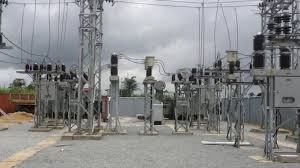Oil & Energy
Counsel’s Absence Stalls Trial Of 10 Murder Suspects
The absence of a prosecu
tion counsel, Mr Justin Enang, at a Federal High Court in Lagos last Thursday stalled the trial of 10 men charged with pipeline vandalism and murder of three engineers of the Nigeria National Petroleum Corporation (NNPC) at Arepo in Ogun State.
The accused are Joel Inerepamu, 25, Rueben Oluwole, 60; John Isaiah, 28; Ineye Okposa, 40; Timi Gunuguu, 22; and Olisa Saheed, 25.
Others are Jigo Jiperende, 31; Timi Koro, 29; Johnbosco Igbhofose, 26; and Peter Opidi; 28.
They are facing a seven-count charge bordering on pipeline vandalism and murder.
The case which was fixed for continuation of trial on Thursday was stalled as a result of Enang’s absence.
Justice Mohammed Idris informed the defence counsel that the prosecutor sent a letter to the court, asking for an adjournment on the grounds that he was indisposed.
The judge then ordered photocopies of the letter to be distributed to the counsel. No objection was raised by all the defence counsel.
Consequently, Justice Idris adjourned the case to April 1 for continuation of trial. The accused were re-arraigned on April 29, 2013 on an amended seven-count charge.
They had all pleaded not guilty to the charges, but the judge ordered their remand at the Ikoyi Prisons.
The Judge granted an accelerated hearing of the case.
Earlier, the prosecutor had told the court that the accused committed the offences on Sept. 5, 2012 at 6.00 p.m. at Arepo.
He said the accused had conspired to vandalise oil pipeline in the area and scooped large quantities of petrol for sale.
He alleged that on sighting the NNPC engineers who were assigned for routine maintenance of the pipelines, the accused, armed with guns, opened fire on them and shot three of the engineers dead instantly.
The offences contravened the provisions of Sections 3(6), 7(a), 7(b), and 17(a) of the Miscellaneous Offences Act, Laws of the Federation, 2004, the prosecution added.
Oil & Energy
Nigeria Loses More Crude Oil Than Some OPEC Members – Nwoko

Nigeria’s losses due to crude oil theft has been said to be more significant than those of some other members of the Organisation of Petroleum Exporting Countries(OPEC).
The Chairman, Senate Ad- hoc Committee on Crude Oil Theft, Senator Ned Nwoko, made this known in an interview with newsmen in Abuja.
Nwoko noted with dismay the detrimental impact of the issue, which, he said include economic damage, environmental destruction, and its impact on host communities.
According to him, the theft was not only weakening the Naira, but also depriving the nation of vital revenue needed for infrastructure, healthcare, education and social development.
The Senator representing Delta North Senatorial District described the scale of the theft as staggering, with reports indicating losses of over 200,000 barrels per day.
Nwoko disclosed that the ad hoc committee on Crude Oil Theft, which he chairs, recently had a two-day public hearing on the rampant theft of crude oil through illegal bunkering, pipeline vandalism, and the systemic gaps in the regulation and surveillance of the nation’s petroleum resources.
According to him, the public hearing was a pivotal step in addressing one of the most pressing challenges facing the nation.
‘’Nigeria loses billions of dollars annually to crude oil theft. This is severely undermining our economy, weakening the Naira and depriving the nation of vital revenue needed for infrastructure, healthcare, education, and social development.
‘’The scale of this theft is staggering, with reports indicating losses of over 200,000 barrels per day more than some OPEC member nations produce.
‘’This criminal enterprise fuels corruption, funds illegal activities and devastates our environment through spills and pollution.
‘’The public hearing was not just another talk shop; it was a decisive platform to uncover the root causes of crude oil theft, bunkering and pipeline vandalism.
‘’It was a platform to evaluate the effectiveness of existing surveillance, monitoring, and enforcement mechanisms; Identify regulatory and legislative gaps that enable these crimes to thrive.
‘’It was also to engage stakeholders, security agencies, host communities, oil companies, regulators, and experts to proffer actionable solutions; and strengthen legal frameworks to ensure stricter penalties and more efficient prosecution of offenders”, he said.
Nwoko noted that Nigeria’s survival depended
Oil & Energy
Tap Into Offshore Oil, Gas Opportunities, SNEPCO Urges Companies

Shell Nigeria Exploration and Production Company Ltd. (SNEPCo) has called on Nigerian companies to position themselves strategically to take full advantage of the growing opportunities in upcoming offshore and shallow water oil and gas projects.
The Managing Director, SNEPCO, Ronald Adams, made the call at the 5th Nigerian Oil and Gas Opportunity Fair (NOGOF) Conference, held in Yenagoa, Bayelsa State, last Thursday.
Adams highlighted the major projects, including Bonga Southwest Aparo, Bonga North, and the Bonga Main Life Extension, as key areas where Nigerian businesses can grow their capacity and increase their involvement.
“Shell Nigeria Exploration and Production Company Ltd. (SNEPCo) says Nigerian companies have a lot to benefit if they are prepared to take advantage of more opportunities in its offshore and shallow water oil and gas projects.
“Projects such as Bonga Southwest Aparo, Bonga North and Bonga Main Life Extension could grow Nigerian businesses and improve their expertise if they applied themselves seriously to executing higher value contracts”, Adams stated.
Adams noted that SNEPCo pioneered Nigeria’s deepwater oil exploration with the Bonga development and has since played a key role in growing local industry capacity.
He emphasized that Nigerian businesses could expand in key areas like logistics, drilling, and the construction of vital equipment such as subsea systems, mooring units, and gas processing facilities.
The SNEPCO boss explained that since production began at the Bonga field in 2005, SNEPCo has worked closely with Nigerian contractors to build systems and develop a skilled workforce capable of delivering projects safely, on time, and within budget both in Nigeria and across West Africa.
According to him, this long-term support has enabled local firms to take on key roles in managing the Bonga Floating, Production, Storage and Offloading (FPSO) vessel, which reached a major milestone by producing its one-billion barrel of oil on February 3, 2023.
Oil & Energy
Administrator Assures Community Of Improved Power Supply

The Emohua Local Government Area Administrator, Franklin Ajinwo, has pledged to improve electricity distribution in Oduoha Ogbakiri and its environs.
Ajinwo made the pledge recently while playing host in a courtesy visit to the Oduoha Ogbakiri Wezina Council of Chiefs, in his office in Rumuakunde.
He stated that arrangements are underway to enhance available power, reduce frequent outages, and promote steady electricity supply.
The move, he said, was aimed at boosting small and medium-scale businesses in the area.
“The essence of power is not just to have light at night. It’s for those who can use it to enhance their businesses”, he said.
The Administrator, who commended the peaceful nature of Ogbakiri people, urged the Chiefs to continue in promoting peace and stability, saying “meaningful development can only thrive in a peaceful environment”.
He also charged the Chiefs to protect existing infrastructure while promising to address the challenges faced by the community.
Earlier, the Oduoha Ogbakiri Wezina Council of Chiefs, led by HRH Eze Goodluck Mekwa Eleni Ekenta XV, expressed gratitude to the Administrator over his appointment and pledged their support to his administration.
The chiefs highlighted challenges facing the community to include incessant power outage, need for new transformers, and the completion of Community Secondary School, Oduoha.
The visit underscored the community’s expectations from the LGA administration.
With Ajinwo’s assurance of enhancing electricity distribution and promoting development, the people of Oduoha Ogbakiri said they look forward to a brighter future.
By: King Onunwor
-
Business3 days ago
Industry Leaders Defend Local Content, … Rally Behind NCDMB
-
News4 days ago
KENPOLY Appoints Abalubu As Ag. Registrar
-

 Niger Delta3 days ago
Niger Delta3 days agoC’River Focused On Youth Empowerment – Commissioner
-
News3 days ago
UN Warns Floods May Unleash Toxic Chemicals, Pose Risk To Elderly, Ecosystems
-
Rivers3 days ago
NSE Members Tasked On National Dev
-
Business3 days ago
NCDMB Promises Oil Industry Synergy With Safety Boots Firm
-
News4 days ago
Police Rescue Kidnapped Victim As Suspects Escape With Gunshots in Rivers
-
Politics3 days ago
Your Lies Chasing Investors From Nigeria, Omokri Slams Obi

